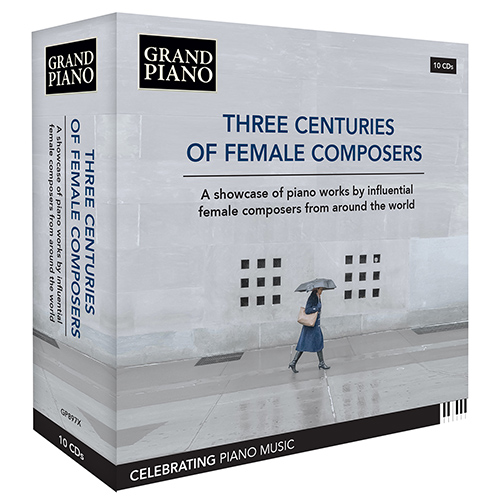
About this Release
- Agathe Backer-Grøndahl
- Tekla Bądarzewska-Baranowska
- Amy Beach
- Anna Bon
- Lili Boulanger
- Anne-Louise Boyvin d'Hardancourt Brillon de Jouy
- Teresa Carreño
- Cécile Chaminade
- Tanya Ekanayaka
- Chiquinha Gonzaga
- Vítězslava Kaprálová
- Emma Kodály
- Haruna Miyake
- Hélène-Antoinette-Marie de Nervo de Montgeroult
- Tatiana Nikolayeva
- Dora Pejačević
- Florence Beatrice Price
- Clara Schumann
- Maria Szymanowska
3 CENTURIES OF FEMALE COMPOSERS
(10-CD Boxed Set)
Ranging from the 18th century to the music of our time, this collection of critically acclaimed recordings explores the significant contribution to solo piano repertoire made by a wide variety of women composers. These rare and important pieces include the works of the celebrated pianist Anne-Louise Brillon de Jouy and of Hélène de Montgeroult, whose sonatas are distinctive additions to the Classical and early Romantic periods. Maria Szymanowska’s deft dances contrast with the fearsome demands of Teresa Carreño, herself a great virtuoso. Vítězslava Kaprálová was the most important female Czech composer of the 20th century, while Agathe Backer Grøndahl was one of Norway’s most respected composer-pianists. Tanya Ekanayaka continues the lineage in her own diverse and hybrid pieces.
Tracklist
|
Brillon de Jouy, Anne-Louise Boyvin d'Hardancourt
|
|
Sonnatte (Sonata) in A Minor (c. 1785) (00:09:00 )
|
|
1
I. Andanté molto con exprésioné (00:04:01)
|
|
2
II. Allégro con motto (00:04:36)
|
|
Troisième Recueil de Sonates pour le Pianoforte avec Accompagnement: Sonata No. 1 in C Minor (version for piano) (c. 1785) (00:08:00 )
|
|
3
I. Allegro non tanto (00:03:01)
|
|
4
II. Minuetto (00:05:08)
|
|
Troisième Recueil de Sonates pour le Pianoforte avec Accompagnement: Sonata No. 2 in B-Flat Major (version for piano) (c. 1785) (00:09:00 )
|
|
5
I. Allegro molto moderato (00:03:35)
|
|
6
II. Rondo et variations (00:05:07)
|
|
Troisième Recueil de Sonates pour le Pianoforte avec Accompagnement: Sonata No. 3 in C Major (version for piano) (c. 1785) (00:08:00 )
|
|
7
I. Andante (00:04:00)
|
|
8
II. Allegro (00:04:08)
|
|
Troisième Recueil de Sonates pour le Pianoforte avec Accompagnement: Sonata No. 4 in G Minor (version for piano) (c. 1785) (00:06:00 )
|
|
9
I. Andante con espressione (00:03:25)
|
|
10
II. Rondo: Allegro (00:02:54)
|
|
Troisième Recueil de Sonates pour le Pianoforte avec Accompagnement: Sonata No. 5 in E-Flat Major (version for piano) (c. 1785) (00:08:00 )
|
|
11
I. Allegro (00:03:44)
|
|
12
II. Presto (00:04:18)
|
|
Troisième Recueil de Sonates pour le Pianoforte avec Accompagnement: Sonata No. 6 in D Minor (version for piano) (c. 1785) (00:13:00 )
|
|
1
I. Cantabile (00:07:20)
|
|
2
II. Allegro (00:06:01)
|
|
Troisième Recueil de Sonates pour le Pianoforte avec Accompagnement: Sonata No. 7 in B-Flat Major (version for piano) (c. 1785) (00:11:00 )
|
|
3
I. Allegro (00:03:10)
|
|
4
II. Andante (00:03:42)
|
|
5
III. Presto (00:03:54)
|
|
Troisième Recueil de Sonates pour le Pianoforte avec Accompagnement: Sonata No. 8 in A Minor (version for piano) (c. 1785) (00:07:00 )
|
|
6
I. — (00:02:24)
|
|
7
II. Minuetto e Trio (00:04:06)
|
|
Troisième Recueil de Sonates pour le Pianoforte avec Accompagnement: Sonata No. 9 in F Minor (version for piano) (c. 1785) (00:07:00 )
|
|
8
I. Andante amoroso (00:02:40)
|
|
9
II. Allegro assai (00:04:00)
|
|
Troisième Recueil de Sonates pour le Pianoforte avec Accompagnement: Sonata No. 10 in G Minor (version for piano) (c. 1785) (00:11:00 )
|
|
10
I. Allegro (00:06:24)
|
|
11
II. Allegro moderato (00:04:14)
|
|
Troisième Recueil de Sonates pour le Pianoforte avec Accompagnement: Sonata No. 11 in D Minor (version for piano) (c. 1785) (00:14:00 )
|
|
12
I. Andante un poco allegro (00:06:47)
|
|
13
II. Rondeau: Allegro (00:07:34)
|
|
Troisième Recueil de Sonates pour le Pianoforte avec Accompagnement: Sonata No. 12 in C Minor (version for piano) (c. 1785) (00:09:00 )
|
|
14
I. Allegro (00:03:31)
|
|
15
II. Presto (00:04:19)
|
|
Montgeroult, Hélène-Antoinette-Marie de Nervo de
|
|
Piano Sonata in F Major, Op. 1, No. 1 () (00:16:00 )
|
|
1
I. Allegro con spirito (00:04:29)
|
|
2
II. Prestissimo (00:05:12)
|
|
Piano Sonata in E-Flat Major, Op. 1, No. 2 () (00:15:00 )
|
|
3
I. Allegro con moto (00:08:29)
|
|
4
II. Allegro vivace (00:05:58)
|
|
Piano Sonata in F Minor, Op. 1, No. 3 () (00:19:00 )
|
|
5
I. Maëstoso con espressione (00:08:48)
|
|
6
II. Allegro agitato (00:10:35)
|
|
Piano Sonata in G Minor, Op. 2, No. 1 () (00:12:00 )
|
|
7
I. Allegro con moto e espressione (00:06:17)
|
|
8
II. Presto (00:05:48)
|
|
Piano Sonata in C Major, Op. 2, No. 2 () (00:20:00 )
|
|
9
I. Allegro moderato (00:09:24)
|
|
10
II. Andantino quasi allegretto (00:04:11)
|
|
11
III. Allegro con brio, vivace (00:06:01)
|
|
Piano Sonata in A Minor, Op. 2, No. 3 () (00:17:00 )
|
|
1
I. Agitato (00:06:48)
|
|
2
II. Adagio (00:07:19)
|
|
3
III. Vivace con espressione (00:02:53)
|
|
Piano Sonata in D Major, Op. 5, No. 1 () (00:26:00 )
|
|
4
I. Allegro spiritoso (00:13:47)
|
|
5
II. Adagio non troppo (00:05:17)
|
|
6
III. Allegro assai (00:01:17)
|
|
7
IV. Presto (00:05:34)
|
|
Piano Sonata in F Minor, Op. 5, No. 2 () (00:21:00 )
|
|
8
I. Allegro moderato con espressione (00:09:08)
|
|
9
II. Aria con espressione (00:05:04)
|
|
10
III. Allegro, agitato con fuoco (00:07:04)
|
|
Piano Sonata in F-Sharp Minor, Op. 5, No. 3 () (00:23:00 )
|
|
11
I. Allegro spiritoso (00:07:01)
|
|
12
II. Adagio non troppo (00:03:57)
|
|
13
III. Presto (00:05:25)
|
|
Szymanowska, Maria
|
|
18 Danses () (00:33:32 )
|
|
1
No. 1. Polonaise in C Major (00:03:09)
|
|
2
No. 2. Polonaise in E Minor (00:02:18)
|
|
3
No. 3. Polonaise in A Major (00:03:01)
|
|
4
No. 4. Polonaise in F Minor (00:03:57)
|
|
5
No. 5. Valse in E-Flat Major (00:01:26)
|
|
6
No. 6. Valse in A Major (00:01:58)
|
|
7
No. 7. Valse in B-Flat Major (00:01:28)
|
|
8
No. 8. Valse in F Major (00:00:50)
|
|
9
No. 9. Anglaise in E-Flat Major (00:00:46)
|
|
10
No. 10. Anglaise in B-Flat Major (00:00:35)
|
|
11
No. 11. Anglaise in A-Flat Major (00:00:44)
|
|
12
No. 12. Anglaise in E-Flat Major (00:00:46)
|
|
13
No. 13. Contre-danse in B-Flat Major (00:01:11)
|
|
14
No. 14. Contre-danse in A-Flat Major (00:00:48)
|
|
15
No. 15. Quadrille in E-Flat Major (00:01:02)
|
|
16
No. 16. Quadrille in F Major (00:01:22)
|
|
17
No. 17. Mazurek in C Major (00:01:14)
|
|
18
No. 18. Cotillon in A-Flat Major (00:07:05)
|
|
24 Mazurkas (1826) (00:15:00 )
|
|
19
Mazurka No. 1 (00:00:38)
|
|
20
Mazurka No. 2 (00:00:54)
|
|
21
Mazurka No. 3 (00:00:48)
|
|
22
Mazurka No. 4 (00:00:41)
|
|
23
Mazurka No. 5 (00:00:32)
|
|
24
Mazurka No. 6 (00:00:33)
|
|
25
Mazurka No. 7 (00:00:40)
|
|
26
Mazurka No. 8 (00:00:36)
|
|
27
Mazurka No. 9 (00:00:34)
|
|
28
Mazurka No. 10 (00:00:37)
|
|
29
Mazurka No. 11 (00:00:17)
|
|
30
Mazurka No. 12 (00:00:39)
|
|
31
Mazurka No. 13 (00:00:31)
|
|
32
Mazurka No. 14 (00:00:31)
|
|
33
Mazurka No. 15 (00:00:33)
|
|
34
Mazurka No. 16 (00:00:30)
|
|
35
Mazurka No. 17 (00:00:53)
|
|
36
Mazurka No. 18 (00:00:39)
|
|
37
Mazurka No. 19 (00:00:38)
|
|
38
Mazurka No. 20 (00:00:31)
|
|
39
Mazurka No. 21 (00:00:16)
|
|
40
Mazurka No. 22 (00:00:13)
|
|
41
Mazurka No. 23 (00:00:22)
|
|
42
Mazurka No. 24 (00:00:51)
|
|
6 Minuets () (00:15:59 )
|
|
43
No. 1 in A Minor: Allegretto (00:02:36)
|
|
44
No. 2 in G Minor: Quasi allegro (00:02:34)
|
|
45
No. 3 in E-Flat Major: Moderato (00:02:13)
|
|
46
No. 4 in G Minor: Vivace agitato (00:02:28)
|
|
47
No. 5 in E Major: Allegro (00:03:42)
|
|
48
No. 6 in D Minor: Vivace (00:02:29)
|
|
49
Polonaise sur l'air national favori du feu Prince Joseph Poniatowsky (1819) (00:02:33)
|
|
50
Danse polonaise () (00:03:39)
|
|
51
Cotillon ou valse figuree () (00:04:09)
|
|
Backer-Grøndahl, Agathe
|
|
2
3 Morceaux, Op. 15: No. 1. Sérénade in F Major () (00:02:43)
|
|
3
Études de concert, Op. 57: No. 1. Allegretto (1903) (00:03:13)
|
|
6 Idylles, Op. 24 (1888) (00:02:00 )
|
|
5
6 Idylles, Op. 24: No. 1. Allegretto leggiero (00:02:17)
|
|
9
6 Idylles, Op. 24: No. 5. Allegretto tranquillo (00:03:11)
|
|
10
6 Fantasistykker, Op. 66, "Barnlige Billeder" (Children Pictures): No. 1. Ride, ride Ranke () (00:01:00)
|
|
12
3 Ungarske studier (3 Hungarian Studies), Op. 38: No. 2. Intermezzo () (00:02:40)
|
|
13
10 Fantasistykker, Op. 39: No. 1. Souvenir (1896) (00:01:59)
|
|
15
4 Skizzer (Sketches), Op. 19: No. 1. Allegretto leggiero (1886) (00:02:27)
|
|
8 Norske folkeviser og folkedanse, Op. 33 () (00:02:00 )
|
|
11
8 Norske folkeviser og folkedanse, Op. 33: No. 3. Laat i Fjellet (00:01:34)
|
|
14
8 Norske folkeviser og folkedanse, Op. 33: No. 8. Bruralaat (Valdres) (00:01:35)
|
|
16
8 Norske folkeviser og folkedanse, Op. 33: No. 1. Halling (00:00:51)
|
|
18
8 Norske folkeviser og folkedanse, Op. 33: No. 6. Springdans (Vinje) (00:01:09)
|
|
11 Norske folkeviser og folkedanse, Op. 30 () (00:03:00 )
|
|
4
11 Norske folkeviser og folkedanse, Op. 30: No. 1. Brudeslaat (Lom?) (00:03:18)
|
|
6
No. 9. Siklebækken (Møllargutten) (00:02:57)
|
|
7
No. 10. Kivlemöyerne (Møllargutten) (00:02:41)
|
|
8
No. 11. Fanitullen (Møllargutten) (00:02:01)
|
|
19
11 Norske folkeviser og folkedanse, Op. 30: No. 5. Springdans (00:00:34)
|
|
Suite, Op. 20 (1887) (00:19:00 )
|
|
1
Suite, Op. 20: I. Prélude (00:03:13)
|
|
20
Suite, Op. 20: II. Nocturne (00:03:52)
|
|
21
Huldreslaat (Dance of the Huldra) (1886) (00:02:01)
|
|
12 Smaa fantasistykker, Op. 55 () (00:03:00 )
|
|
17
12 Smaa fantasistykker, Op. 55: No. 4. Et Farvel (00:01:56)
|
|
22
12 Smaa fantasistykker, Op. 55: No. 9. Romance (00:01:06)
|
|
23
I blaafjellet (In the Blue Mountains), Op. 44: II. I Trollhallen (1894) (00:04:40)
|
|
24
6 Concert Etudes, Op. 11: No. 4 in B-Flat Major (1881) (00:06:37)
|
|
Carreño, Teresa
|
|
1
Souvenirs de mon pays, Op. 10 () (00:07:12)
|
|
2
Caprice-Etude No. 1, Op. 4 () (00:07:00)
|
|
3
Priere, Op. 12 () (00:02:59)
|
|
4
Reverie-Impromptu, Op. 3 () (00:06:47)
|
|
5
Marche funebre, Op. 11 () (00:06:40)
|
|
6
Caprice-Etude No. 2, Op. 6 () (00:08:31)
|
|
7
Élégie No. 2: Partie, Op. 18 () (00:05:59)
|
|
8
Élégie No. 6: Plaintes au borde d'une tombe, Op. 22 () (00:09:41)
|
|
9
Une larme, Op. 5 () (00:03:16)
|
|
10
Gottschalk Waltz, Op. 1 () (00:07:35)
|
|
Kaprálová, Vítězslava
|
|
Sonata appassionata, Op. 6 (1933) (00:18:45 )
|
|
1
I. Maestoso. Appassionato (00:07:58)
|
|
2
II. Theme and variations: Theme: Andante semplice (00:00:35)
|
|
3
II. Theme and variations: Variation 1: Più mosso (00:00:35)
|
|
4
II. Theme and variations: Variation 2: Scherzando (00:00:30)
|
|
5
II. Theme and variations: Variation 3: Con moto (00:01:07)
|
|
6
II. Theme and variations: Variation 4: Vivace (00:01:03)
|
|
7
II. Theme and variations: Variation 5: Largo (00:01:38)
|
|
8
II. Theme and variations: Variation 6: Vivo (00:05:19)
|
|
9
Praeludium, Op. 9, No. 1 (1935) (00:04:39)
|
|
10
Crab Canon, Op. 9, No. 2 (1935) (00:01:44)
|
|
11
Grotesque Passacaglia (1935) (00:02:34)
|
|
5 Piano Compositions (1932) (00:12:07 )
|
|
12
No. 1. Maestoso (00:01:30)
|
|
13
No. 2. Cantabile-moderato (00:01:08)
|
|
14
No. 3. Andante con moto (00:01:31)
|
|
15
No. 4. Tempo di menuetto (00:02:43)
|
|
16
No. 5. Alla marcia funebre (00:06:15)
|
|
Dubnová Preludia (April Preludes), Op. 13 (1937) (00:09:00 )
|
|
17
No. 1. Allegro ma non troppo (00:02:08)
|
|
18
No. 2. Andante (00:03:08)
|
|
19
No. 3. Andante semplice (00:01:42)
|
|
20
No. 4. Vivo (00:02:08)
|
|
Variations sur le Carillon de l'Église St-Étienne-du-Mont, Op. 16 (1938) (00:07:59 )
|
|
21
Theme - Variation 1: Poco vivo (00:01:38)
|
|
22
Variation 2: Allegretto (00:00:36)
|
|
23
Variation 3: Lento, ma non troppo (00:01:08)
|
|
24
Variation 4: Quasi etude-vivo (00:00:45)
|
|
25
Variation 5: Choral (00:01:34)
|
|
26
Variation 6: Allegro e coda (00:02:18)
|
|
27
2 Dances for Piano, Op. 23: No. 1 (reconstructed by G. Koukl) (1940) (00:03:11)
|
|
2 Kytičky (2 Bouquets of Flowers) (1935) (00:02:00 )
|
|
28
No. 1. Kytička fialek (Small Bouquet of Violets) (00:00:41)
|
|
29
No. 2. Podzimní listí (Autumn Leaves) (00:00:55)
|
|
30
Písnička (Little Song) (1936) (00:01:18)
|
|
31
Ostinato Fox (1937) (00:01:06)
|
|
32
Slavnostní Fanfára (Festive Fanfare) (1940) (00:00:24)
|
|
Ekanayaka, Tanya
|
|
1
Neptune: Asháninka Kindled (2020) (00:16:44)
|
|
2
Mercury with Antarctica (2020) (00:05:11)
|
|
3
Uranus: Numbulwar Sustaining (2020) (00:05:50)
|
|
4
Venus: Sámi Traced (2020) (00:05:22)
|
|
5
Saturn: Gond Inspired (2019) (00:10:12)
|
|
6
Earth - Life (2020) (00:05:01)
|
|
7
Jupiter: Cree Cast (2020) (00:05:26)
|
|
8
Mars: Hadzabe Touched (2020) (00:03:58)
|
|
Pejačević, Dora
|
|
1
Blumenleben (Life of Flowers), Op. 19: No. 5. Rose (1905) (00:02:24)
|
|
Chaminade, Cécile
|
|
2
Valse-Caprice, Op. 33 () (00:05:09)
|
|
Bon, Anna
|
|
3
Keyboard Sonata in B-Flat Major, Op. 2, No. 2 () (00:06:44)
|
|
Schumann, Clara
|
|
4
3 Romances, Op. 21: No. 1 in A Minor (1855) (00:05:15)
|
|
Backer-Grøndahl, Agathe
|
|
5
3 Morceaux, Op. 15: No. 3. Humoresque in G Minor () (00:04:13)
|
|
Beach, Amy
|
|
6
Hermit Thrush at Eve, Op. 92, No. 1 (1921) (00:04:58)
|
|
7
Scottish Legend, Op. 54, No. 1 (1903) (00:03:38)
|
|
Kodály, Emma
|
|
8
Valses Viennoises (c.1925) (00:09:57)
|
|
Boulanger, Lili
|
|
9
D'un vieux jardin (1914) (00:02:54)
|
|
10
D'un jardin clair (1914) (00:01:54)
|
|
11
Cortège (version for piano) (1914) (00:01:28)
|
|
Gonzaga, Chiquinha
|
|
12
Cananéa, Valsa (arr. for piano) (1900) (00:03:22)
|
|
13
Água do Vintém () (00:02:04)
|
|
Backer-Grøndahl, Agathe
|
|
14
3 Klaverstykker, Op. 35: No. 2. Albumblad () (00:02:15)
|
|
Bądarzewska-Baranowska, Tekla
|
|
15
Douce Rêverie, Mazurka () (00:01:52)
|
|
Price, Florence Beatrice
|
|
16
Piano Sonata in E Minor: II. Andante () (00:04:23)
|
|
Nikolayeva, Tatiana
|
|
Album for Children, Op. 19 (1958) (00:03:30 )
|
|
17
No. 1. March (00:01:00)
|
|
18
No. 2. Music Box (00:01:15)
|
|
19
No. 3. Old Waltz (00:01:18)
|
|
Kaprálová, Vítězslava
|
|
20
Dubnová Preludia (April Preludes), Op. 13: No. 2. Andante (1937) (00:02:45)
|
|
Miyake, Haruna
|
|
21
43° North - a Tango (2019 version for piano) (2019) (00:07:19)
|
The Composer(s)
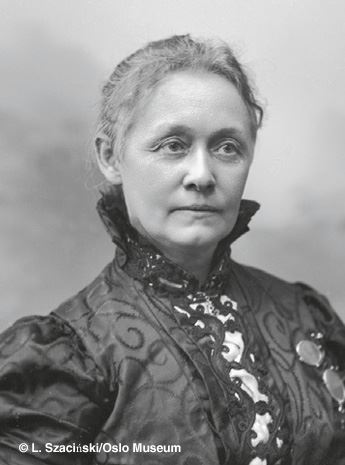 Agathe Backer Grøndahl was a pianist and composer of international stature. Born in Holmestrand, Norway, she took lessons with Hans von Bülow in Florence and Franz Liszt in Weimar. Her output contains over 400 songs, piano pieces and Norwegian folk song arrangements. The fleet-footed Humoresque in G minor from 3 Morceaux, Op. 15 (1882) is rhythmically witty, with natural charm and vitality.
Agathe Backer Grøndahl was a pianist and composer of international stature. Born in Holmestrand, Norway, she took lessons with Hans von Bülow in Florence and Franz Liszt in Weimar. Her output contains over 400 songs, piano pieces and Norwegian folk song arrangements. The fleet-footed Humoresque in G minor from 3 Morceaux, Op. 15 (1882) is rhythmically witty, with natural charm and vitality.  The first American woman composer to prove successful in larger orchestral forms, Amy Beach, after her marriage, restricted her concert appearances as a pianist in order to comply with her husband’s desire that she concentrate on composition. After the death of her husband she resumed her successful performance career.
The first American woman composer to prove successful in larger orchestral forms, Amy Beach, after her marriage, restricted her concert appearances as a pianist in order to comply with her husband’s desire that she concentrate on composition. After the death of her husband she resumed her successful performance career. 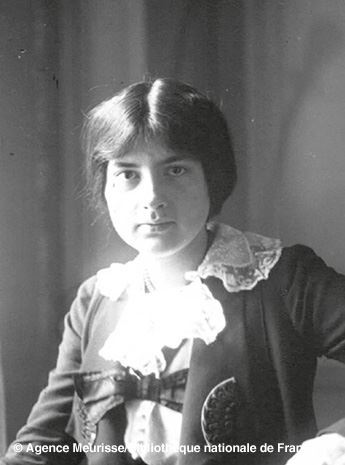 Encouraged by her elder sister Nadia, the French composer Lili Boulanger was the first woman to win the Prix de Rome and was prolific, during her short life, writing music very much in the prevailing style of the period.
Encouraged by her elder sister Nadia, the French composer Lili Boulanger was the first woman to win the Prix de Rome and was prolific, during her short life, writing music very much in the prevailing style of the period. 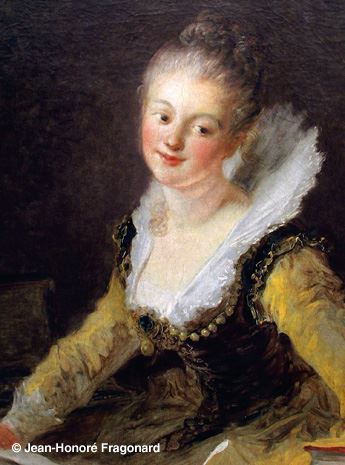 In addition to her gifts as an instrumentalist, Madame Brillon also composed. She has almost 90 works to her credit, most of them chamber music. She wrote for keyboard, but also composed sonatas for cello, violin or harp, trios, and sometimes vocal music which one can imagine her two daughters performing. Her music was only played in private settings, in particular at her own salons. None of her works were published during her lifetime. This is not an oversight but a choice: at that time, it was not the done thing for a woman of Anne-Louise’s standing to make her music public. Composition and playing music had to be reserved for the private sphere.
In addition to her gifts as an instrumentalist, Madame Brillon also composed. She has almost 90 works to her credit, most of them chamber music. She wrote for keyboard, but also composed sonatas for cello, violin or harp, trios, and sometimes vocal music which one can imagine her two daughters performing. Her music was only played in private settings, in particular at her own salons. None of her works were published during her lifetime. This is not an oversight but a choice: at that time, it was not the done thing for a woman of Anne-Louise’s standing to make her music public. Composition and playing music had to be reserved for the private sphere. 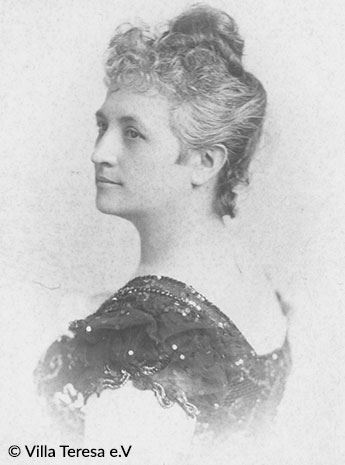 Teresa Carreño’s immense musical talent became apparent at an early age. She performed for both Gioachino Rossini and Franz Liszt; she met with eminent musicians such as Charles Gounod and Camille Saint-Saëns, and Anton Rubinstein himself insisted on giving her lessons, and even later on he was to hold her in high regard. Her repertoire by this point included works by Beethoven and Chopin; apart from that she mainly performed opera paraphrases, as was customary for a pianist of her time. She also presented her own compositions in many concerts, which appear very sophisticated considering her young age.
Teresa Carreño’s immense musical talent became apparent at an early age. She performed for both Gioachino Rossini and Franz Liszt; she met with eminent musicians such as Charles Gounod and Camille Saint-Saëns, and Anton Rubinstein himself insisted on giving her lessons, and even later on he was to hold her in high regard. Her repertoire by this point included works by Beethoven and Chopin; apart from that she mainly performed opera paraphrases, as was customary for a pianist of her time. She also presented her own compositions in many concerts, which appear very sophisticated considering her young age. 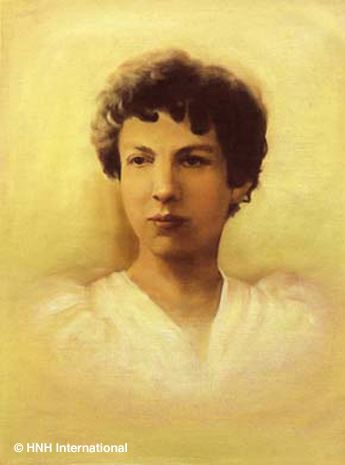 Born in Paris in 1857, Cécile Chaminade showed some precocity as a pianist and composer. Her many compositions included a number of piano pieces that found considerable favour in the drawing rooms of the later 19th and earlier 20th centuries. Among these Automne enjoyed particular popularity.
Born in Paris in 1857, Cécile Chaminade showed some precocity as a pianist and composer. Her many compositions included a number of piano pieces that found considerable favour in the drawing rooms of the later 19th and earlier 20th centuries. Among these Automne enjoyed particular popularity. 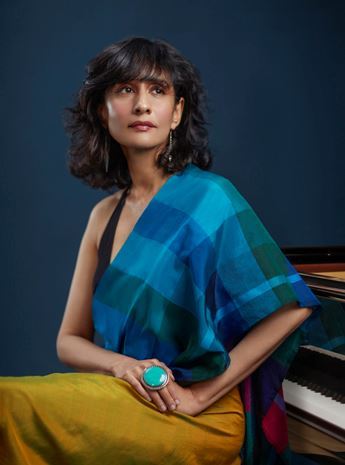 Dr Tanya Ekanayaka is an internationally acclaimed and award-winning Sri Lankan-British concert composer-pianist. Although trained as a pianist, her compositional skills are the result of a purely intuitive and natural development. Influenced by her multifaceted background, multilingualism, ambidexterity and partial colour synaesthesia her works which she describes as ‘deeply autobiographical’ and which evolve when she is at the piano (and at times in her dreams), have not been scored in any form but remain precisely frozen in her memory once evolved. Consistent with her interdisciplinary background, she holds a doctorate for interdisciplinary research involving Linguistics and Musicology from The University of Edinburgh, where she has also been engaged part time in academic teaching since 2007, as well as advanced academic and professional qualifications in Music Performance, Linguistics and Literature.
Dr Tanya Ekanayaka is an internationally acclaimed and award-winning Sri Lankan-British concert composer-pianist. Although trained as a pianist, her compositional skills are the result of a purely intuitive and natural development. Influenced by her multifaceted background, multilingualism, ambidexterity and partial colour synaesthesia her works which she describes as ‘deeply autobiographical’ and which evolve when she is at the piano (and at times in her dreams), have not been scored in any form but remain precisely frozen in her memory once evolved. Consistent with her interdisciplinary background, she holds a doctorate for interdisciplinary research involving Linguistics and Musicology from The University of Edinburgh, where she has also been engaged part time in academic teaching since 2007, as well as advanced academic and professional qualifications in Music Performance, Linguistics and Literature. 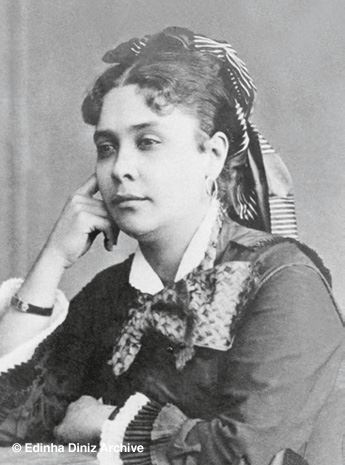 Born in Rio de Janeiro, Francisca ‘Chiquinha’ Gonzaga studied the piano in her home city with José de Sousa Lobo and the Portuguese pianist Arthur Napoleão dos Santos. Her first success as a composer was the publication in 1877 of the polka Atraente. Famous for waltzes, polkas, marches and tangos, she also wrote operettas.
Born in Rio de Janeiro, Francisca ‘Chiquinha’ Gonzaga studied the piano in her home city with José de Sousa Lobo and the Portuguese pianist Arthur Napoleão dos Santos. Her first success as a composer was the publication in 1877 of the polka Atraente. Famous for waltzes, polkas, marches and tangos, she also wrote operettas. 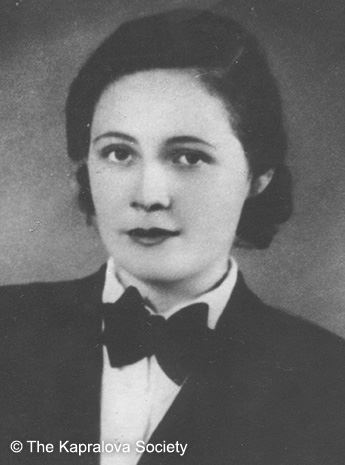 Like her composer father, Kaprálová was drawn to piano as her natural instrument, and piano compositions are well represented in her relatively large creative output that includes about fifty compositions. Piano also played a crucial role in her music as a compositional tool with which she experimented in both smaller and larger forms. It is therefore not surprising that her most original and sophisticated works are for this instrument: from her Sonata appassionata and Piano Concerto in D Minor to April Preludes and Variations sur le carillon de l’église St.-Etienne-du-Mont (and the Martinu–influenced, neoclassical Partita in which piano also plays an important percussive role). Piano compositions arguably represent the best of Kaprálová’s music which abounds in fresh and bold ideas, humour, passion and tenderness, and is imbued with youthful energy.
Like her composer father, Kaprálová was drawn to piano as her natural instrument, and piano compositions are well represented in her relatively large creative output that includes about fifty compositions. Piano also played a crucial role in her music as a compositional tool with which she experimented in both smaller and larger forms. It is therefore not surprising that her most original and sophisticated works are for this instrument: from her Sonata appassionata and Piano Concerto in D Minor to April Preludes and Variations sur le carillon de l’église St.-Etienne-du-Mont (and the Martinu–influenced, neoclassical Partita in which piano also plays an important percussive role). Piano compositions arguably represent the best of Kaprálová’s music which abounds in fresh and bold ideas, humour, passion and tenderness, and is imbued with youthful energy. 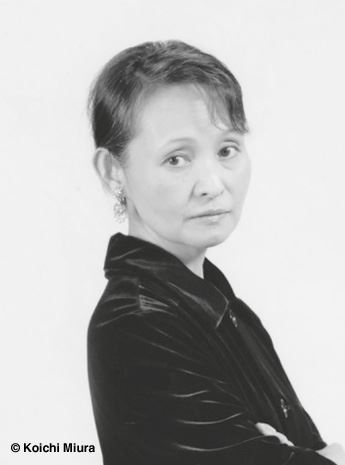 Miyake Haruna was born in 1942 in Tokyo, where she studied music and debuted as a pianist at the age of 14. She continued her studies at The Juilliard School of Music in New York with Vincent Persichetti. Among her many compositions are a Piano Concerto and Why Not, My Baby? for soprano, piano and trumpet. A frequent collaborator with the pianist-composer Yuji Takahashi, Miyake combines Japanese and Western idioms and often uses traditional Japanese instruments in her scores.
Miyake Haruna was born in 1942 in Tokyo, where she studied music and debuted as a pianist at the age of 14. She continued her studies at The Juilliard School of Music in New York with Vincent Persichetti. Among her many compositions are a Piano Concerto and Why Not, My Baby? for soprano, piano and trumpet. A frequent collaborator with the pianist-composer Yuji Takahashi, Miyake combines Japanese and Western idioms and often uses traditional Japanese instruments in her scores. 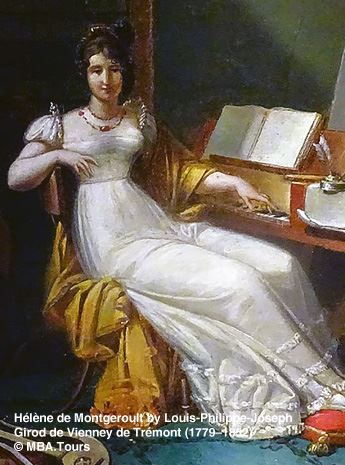 The nine sonatas of the distinguished pianist, composer, and teacher Hélène de Montgeroult represent a major contribution to the rich French piano repertoire of the late Classic and early Romantic periods. She was influential in the development of the expressive cantabile style of the 19th century, not only as a performer and composer but also as the author of a celebrated piano method.
The nine sonatas of the distinguished pianist, composer, and teacher Hélène de Montgeroult represent a major contribution to the rich French piano repertoire of the late Classic and early Romantic periods. She was influential in the development of the expressive cantabile style of the 19th century, not only as a performer and composer but also as the author of a celebrated piano method. 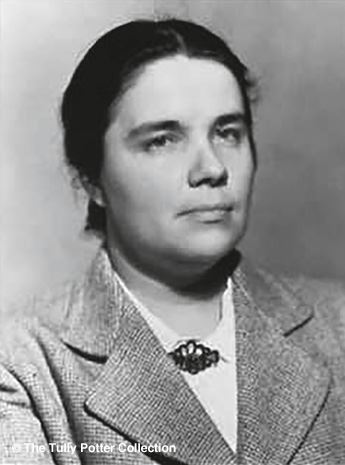 Tatyana Nikolayeva came to fame as part of a formidably talented group of Russian pianists, including Sviatoslav Richter and Emil Gilels. In 1947, she finished composition studies at the Moscow Conservatory with a Piano Concerto, which won a state award. In the same year she gave a recital in the Moscow Conservatory which began almost half a century of concert performances. Her compositions contain symphonies, a piano quintet and the song cycle Islandiya (‘Iceland’).
Tatyana Nikolayeva came to fame as part of a formidably talented group of Russian pianists, including Sviatoslav Richter and Emil Gilels. In 1947, she finished composition studies at the Moscow Conservatory with a Piano Concerto, which won a state award. In the same year she gave a recital in the Moscow Conservatory which began almost half a century of concert performances. Her compositions contain symphonies, a piano quintet and the song cycle Islandiya (‘Iceland’).  Dora Pejačević was born in Budapest and grew up in her family’s palace in Našice, Slavonia. She studied in Dresden with Percy Sherwood and in Munich with Walter Courvoisier. Her output embraces songs, a piano concerto and a symphony. Most of her works feature the piano.
Dora Pejačević was born in Budapest and grew up in her family’s palace in Našice, Slavonia. She studied in Dresden with Percy Sherwood and in Munich with Walter Courvoisier. Her output embraces songs, a piano concerto and a symphony. Most of her works feature the piano.  The broad arc of Florence Price’s life in many ways resembled those of the millions of African Americans who moved away from the southern United States in search of new professional opportunities and greater personal autonomy during the Jim Crow era. Born into a middleclass family in Little Rock, Arkansas in 1887, Price received a sound musical education from her mother after the city’s pre-eminent white instructors refused to teach her. Since opportunities for more advanced musical training were largely unavailable for women of color in the South, her mother enrolled her at the New England Conservatory after she completed high school in 1903. There she pursued courses of study in organ and piano pedagogy while receiving tutelage in all musical disciplines from conservatory faculty, including director George Whitefield Chadwick.
The broad arc of Florence Price’s life in many ways resembled those of the millions of African Americans who moved away from the southern United States in search of new professional opportunities and greater personal autonomy during the Jim Crow era. Born into a middleclass family in Little Rock, Arkansas in 1887, Price received a sound musical education from her mother after the city’s pre-eminent white instructors refused to teach her. Since opportunities for more advanced musical training were largely unavailable for women of color in the South, her mother enrolled her at the New England Conservatory after she completed high school in 1903. There she pursued courses of study in organ and piano pedagogy while receiving tutelage in all musical disciplines from conservatory faculty, including director George Whitefield Chadwick. 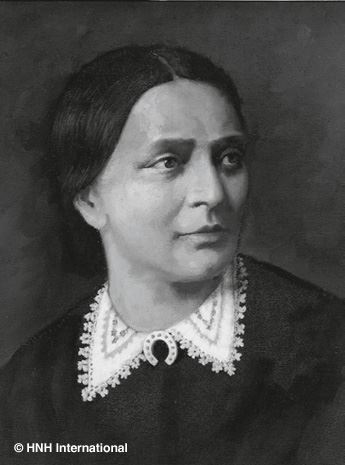 The daughter of Friedrich Wieck, her teacher and mentor until her marriage with Robert Schumann, Clara Schumann had embarked on a successful career as a pianist before her liaison with Schumann, leading to their marriage in 1840. She continued her international career as a performer and supported her young family after her husband’s final insanity and death in 1856. She was helped after this by Brahms, to whom Schumann had given considerable encouragement.
The daughter of Friedrich Wieck, her teacher and mentor until her marriage with Robert Schumann, Clara Schumann had embarked on a successful career as a pianist before her liaison with Schumann, leading to their marriage in 1840. She continued her international career as a performer and supported her young family after her husband’s final insanity and death in 1856. She was helped after this by Brahms, to whom Schumann had given considerable encouragement.  The young Maria Wolowska displayed extraordinary musical precocity and she quickly became a sensation in the Warsaw salons. To broaden her musical horizons, it was decided to send her to Paris, where her fame spread. There she impressed such luminaries as the composers Gioachino Rossini and Luigi Cherubini (who dedicated a piano fantasia to her).
The young Maria Wolowska displayed extraordinary musical precocity and she quickly became a sensation in the Warsaw salons. To broaden her musical horizons, it was decided to send her to Paris, where her fame spread. There she impressed such luminaries as the composers Gioachino Rossini and Luigi Cherubini (who dedicated a piano fantasia to her). Reviews
“One might quibble that a host of other worthy subjects such as Fanny Mendelssohn, Ethel Smyth, Rebecca Clarke, Pauline Viardot, Grazyna Bacewicz, and Louise Farrenc were not included, but what we do have is most worthy of discovery, and since “influential” and not “greatness” is the collective term used I can recommend the box, its performances, recordings (Steinway D), and notes as a fine effort, especially in the proliferation of today’s mega boxes.” – American Record Guide
“This remarkable collection amply shows how the growing universe of female compositions, so rich and so symbolic, is essential. An eloquent and exciting demonstration.” – Crescendo
“This box set presents works of such female composers with high quality interpretations. This is not a mere “document” but a cosmos with shining stars which are living evidence of female composers from the past and now.” – Record Geijutsu

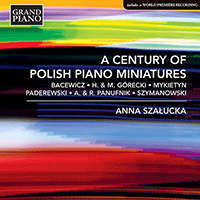
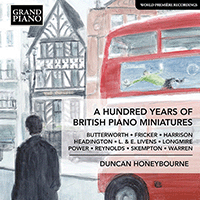
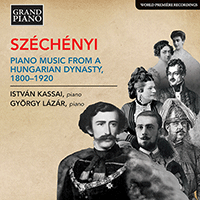
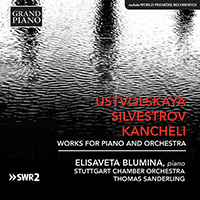
 Grand Piano has gained a reputation for producing high quality recordings of rare keyboard gems. Dedicated to the exploration of undiscovered piano repertoire, the label specialises in complete cycles of piano works by many lesser-known composers, whose output might otherwise have remained unknown and unrecorded.
Grand Piano has gained a reputation for producing high quality recordings of rare keyboard gems. Dedicated to the exploration of undiscovered piano repertoire, the label specialises in complete cycles of piano works by many lesser-known composers, whose output might otherwise have remained unknown and unrecorded.






